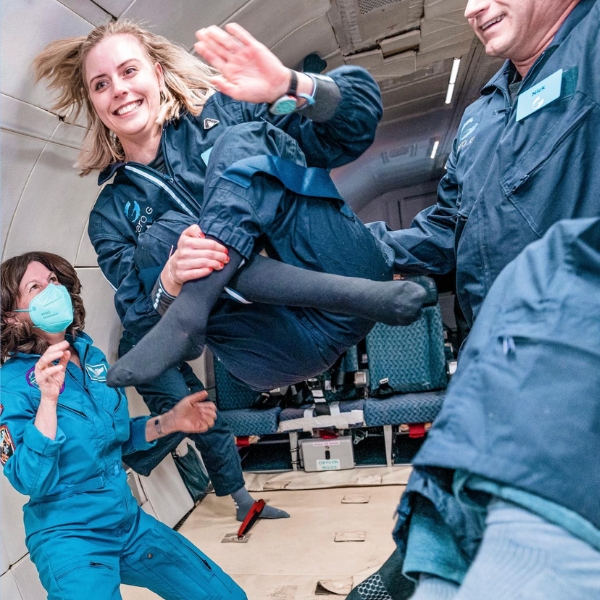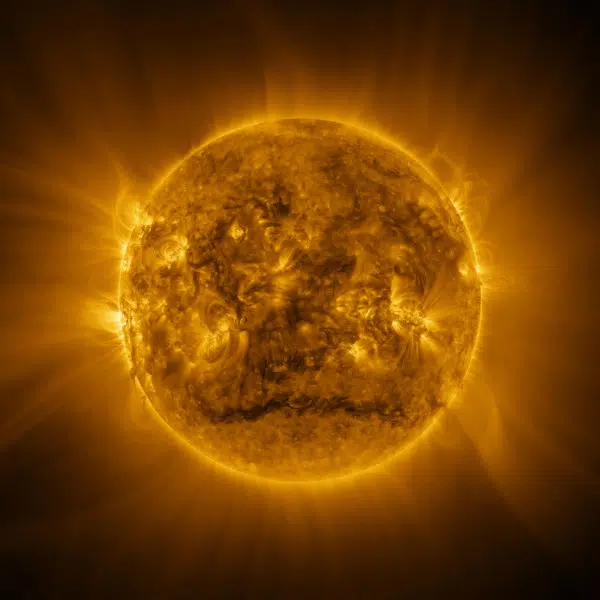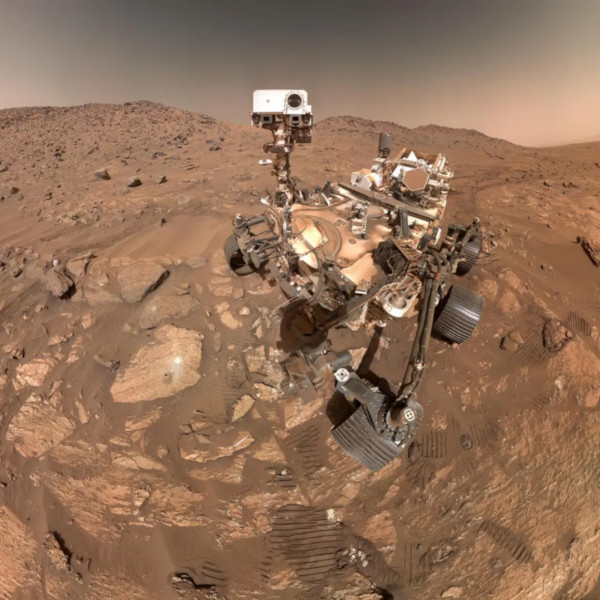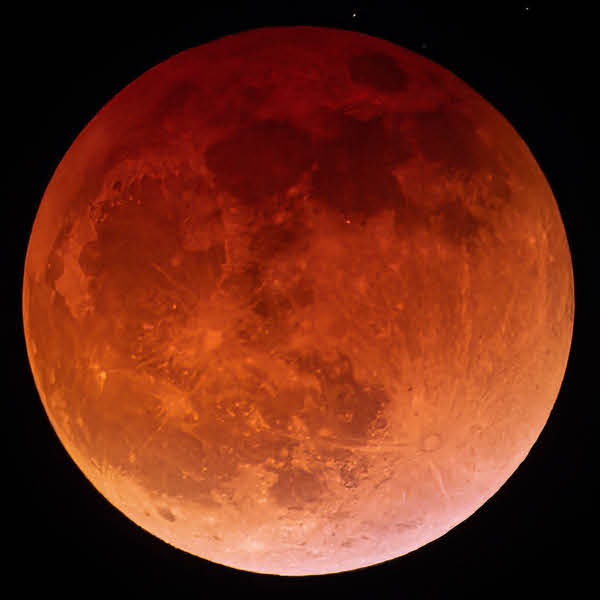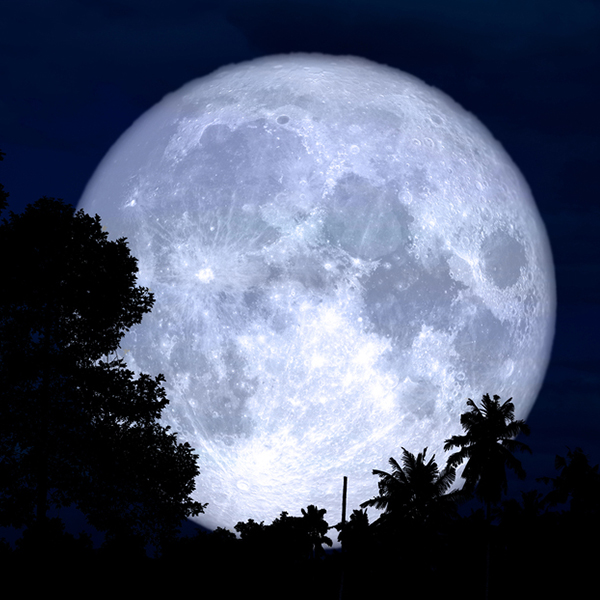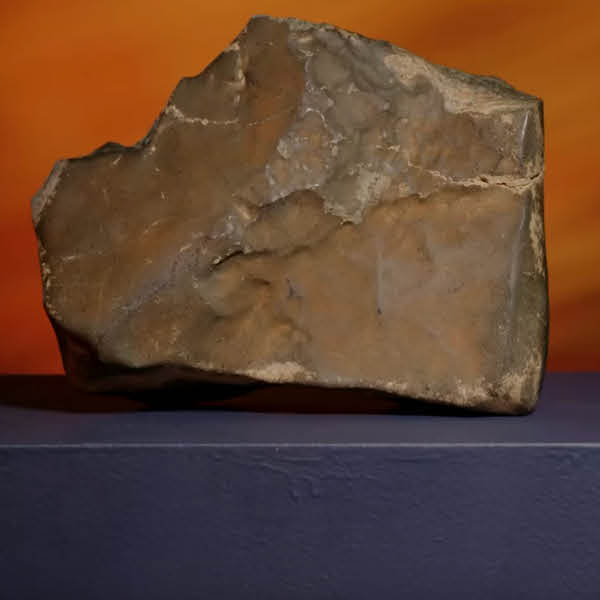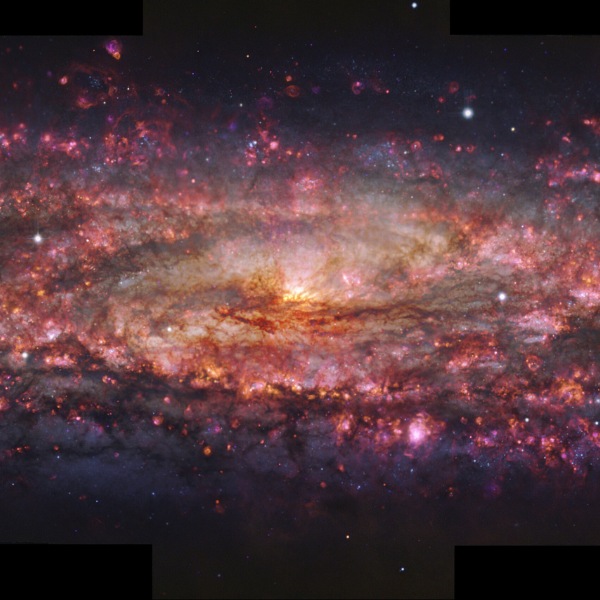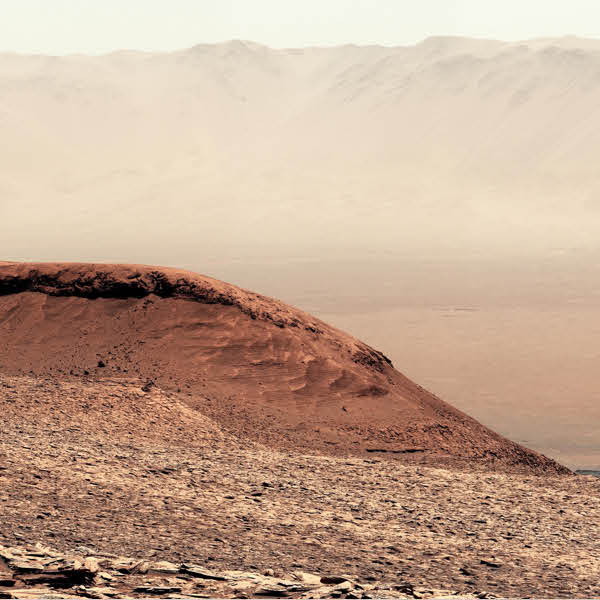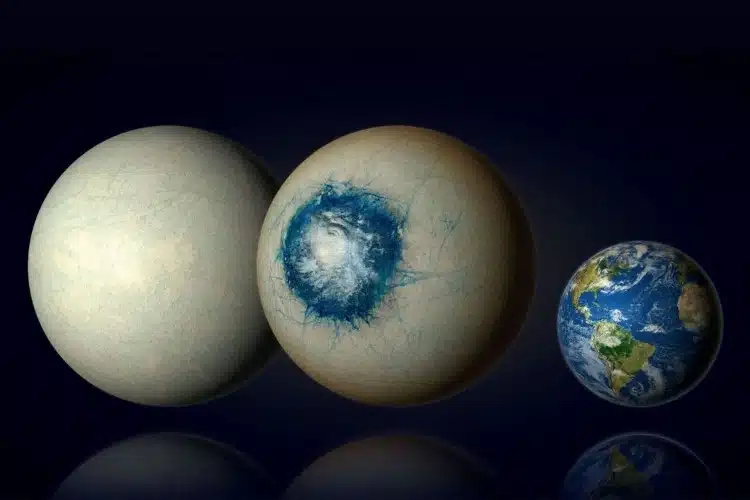
Temperate exoplanet LHS 1140 b may be a world completely covered in ice (left) similar to Jupiter’s moon Europa or may be an ice world with a liquid substellar ocean and a cloudy atmosphere (center). LHS 1140 b is 1.7 times the size of our planet Earth (right) and is the most promising habitable zone exoplanet yet found in the search for liquid water beyond the Solar System. (Illustration: Benoit Gougeon, Université de Montréal)
Since its discovery in 2017, scientists believed that exoplanet LHS 1140 b was a gaseous planet similar to Neptune. However, thanks to data gathered by the James Webb Space Telescope in December 2023, astronomers believe this super-Earth may be quite different. The temperate exoplanet could actually be habitable and either covered in ice or have an atmosphere and liquid ocean.
LHS 1140 b is located 48 light-years from Earth in the constellation Cetus, orbiting a red dwarf star roughly one-fifth the size of the Sun. Measuring about 1.7 times the size of Earth, it's one of the most promising exoplanets inside its star's habitable zone. The exoplanet was observed by Webb's NIRISS (Near-Infrared Imager and Slitless Spectrograph) during two transits, and the valuable data collected allowed researchers to determine whether it was a smaller-gaseous Neptune or a rocky super-Earth.
Université de Montréal Ph.D. student Charles Cadieux led a team in analyzing the data and they were able to exclude the possibility that LHS 1140 b is similar to Neptune. Instead, their research, which was published in The Astrophysical Journal Letters, points to a potential nitrogen-rich atmosphere. Should that be confirmed, it would be the first temperate exoplanet to have a second atmosphere created after its initial formation.
Interestingly, the data also shows that the planet is less dense than expected. This suggests that 10% to 20% of its mass may be water. It's a tantalizing possibility, given our search for a habitable planet. Researchers believe that the exoplanet either resembles a snowball or has a liquid ocean that faces its host star. This second possibility is since, much like our Moon, LHS 1140 b most likely has a synchronous rotation.
“Of all currently known temperate exoplanets, LHS 1140 b could well be our best bet to one day indirectly confirm liquid water on the surface of an alien world beyond our Solar System,” says Cadieux, lead author of the new study. “This would be a major milestone in the search for potentially habitable exoplanets.”
Related Articles:
Newly Discovered Exoplanet the Size of Earth May Be Habitable
Colorful Infographics Explore the Mysterious World of Exoplanets
Webb Telescope Discovers Molecules Only Made By Living Organisms on Exoplanet
Listen to the Beautiful Sounds of NASA Discovering Over 5,000 Exoplanets Since 1992











































































